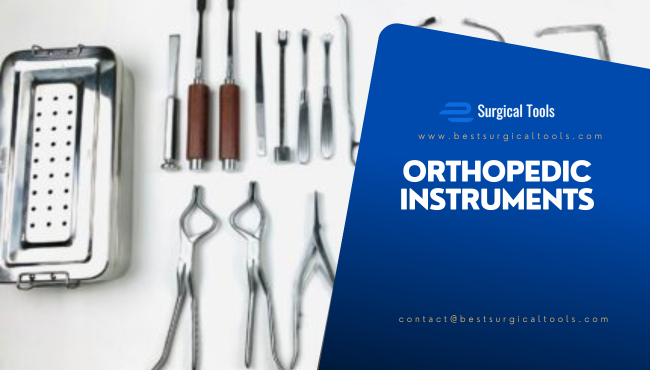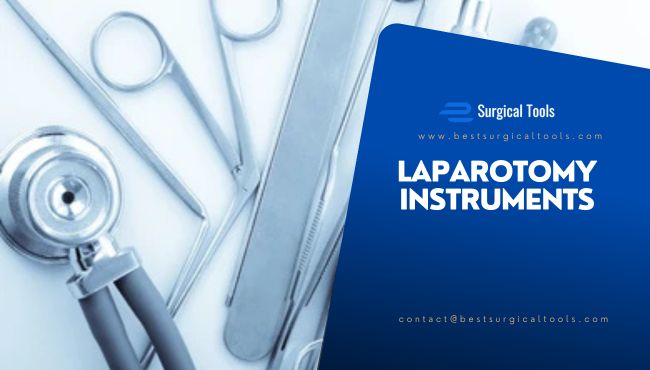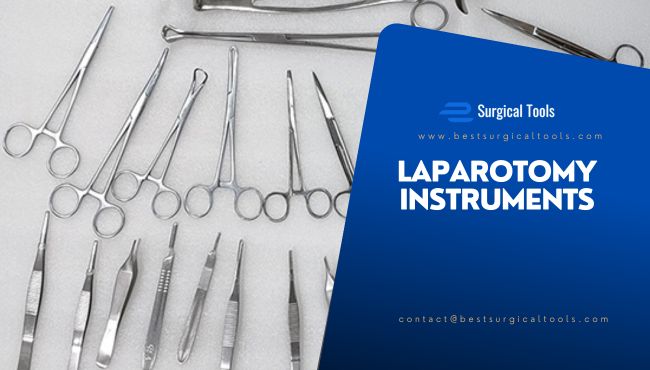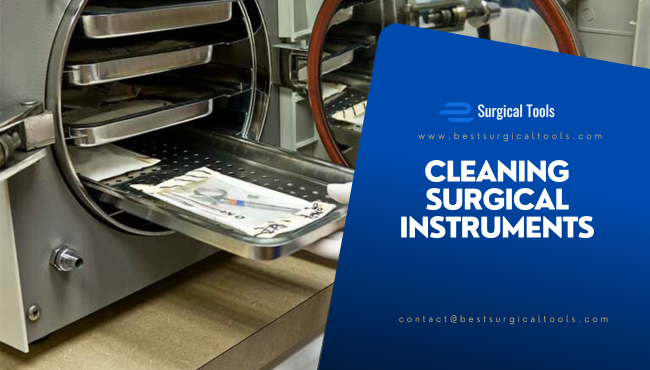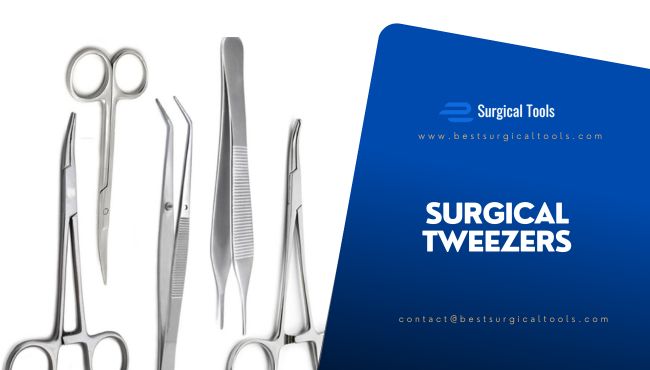
Exploring the Different Types of Surgical Tweezers and Their Uses
Imagine being in an operating room where every move counts. That’s where surgical tweezers come into play—those small but mighty tools that surgeons rely on to handle delicate tissues, grab sutures, or remove tiny objects with finesse. Whether it’s a routine procedure or a complex surgery, these instruments bring a level of control and accuracy that’s absolutely vital. They’re not just tools; they’re an extension of a surgeon’s hands, helping to minimize risks like tissue damage and ensuring the best possible outcomes.
In the high-stakes world of surgery, precision isn’t optional—it’s everything. Surgical tweezers let surgeons gently reposition tissues, hold tiny vessels, or extract foreign objects without causing unnecessary trauma. With a steady grip that doesn’t harm fragile structures, these tools give medical pros the confidence to tackle even the trickiest procedures.

Why Surgical Tweezers Matter So Much
It’s hard to overstate how crucial surgical tweezers are in the operating room. From general surgery to specialized fields like neurosurgery, ophthalmology, or plastic surgery, they’re everywhere. Their magic lies in their ability to handle delicate tasks with pinpoint accuracy while letting surgeons make split-second decisions under pressure. Need to suture a wound? Remove a splinter-like object? That’s where a quality pair of surgical tweezers shines, making a real difference in how well a patient recovers.
Choosing the right pair can streamline a procedure and cut down on complications. For instance, tweezers with just the right grip can reduce tissue trauma, improve visibility in tight spots, and avoid accidental slips. In surgeries involving super-sensitive areas like the brain or eyes, the perfect surgical tweezers can even be the deciding factor between success and struggle.
What’s Coming Up in This Article
Stick with us as we break down the different types of surgical tweezers and how they’re used across medical specialties. We’ll explore what makes each one unique—think tip designs, materials, and ergonomic perks—so you can see how they’re tailored for specific jobs. Plus, we’ll cover why picking the right tweezers matters and share tips on keeping them in tip-top shape for years of reliable use.
Understanding Surgical Tweezers
What Exactly Are Surgical Tweezers?
At their core, surgical tweezers—sometimes called forceps—are handheld tools that surgeons use to grab, hold, or tweak tissues, sutures, and other tiny items during procedures. Picture two slender arms joined at one end, with tips that might be flat, curved, or sharp, depending on what’s needed. Most are crafted from top-notch stainless steel or titanium, which means they’re tough, rust-resistant, and can stay sharp through countless sterilization rounds.
These tools are built to thrive in sterile settings and handle the intricate demands of surgery. They’re comfy to hold for hours (a big deal during long operations!) and offer a solid grip for secure handling. With so many tip styles and sizes out there, you can find the perfect surgical tweezers for any task. Curious about their role in eye surgery? Check out this detailed guide from the American Academy of Ophthalmology for more insight.
Materials and Construction: Built to Last
High-quality surgical tweezers are usually made from stainless steel—a material that’s tough, resists rust, and shrugs off stains. Some even get a titanium boost for extra strength or to stand up to harsh sterilization chemicals. The choice of material affects how the tweezers feel in hand, striking a balance between weight and control so surgeons can wield them effortlessly.
Comfort’s a big deal too. Many tweezers come with ergonomic designs like molded handles or cushioned grips to ease hand strain during marathon surgeries. Some even have locking features to stay clamped shut when needed—a handy trick for certain procedures. Want to geek out on surgical tool materials? The National Institutes of Health has a great read on what goes into making these instruments.
Key Features That Make Surgical Tweezers Stand Out
What makes surgical tweezers so special? Let’s break it down with the features that matter most:
- Precision Tips
From flat to pointed to rounded, the tips of surgical tweezers come in all shapes for different jobs. Precision is key in delicate surgeries—think handling tiny tissues without a scratch. - Handles and Grip
A good handle means a comfy, firm hold. Textured grips or finger loops keep them from slipping, while ergonomic designs cut down on fatigue. It’s all about control, even after hours in the OR. - Shape and Size
Whether it’s fine tips for microsurgery or broader ones for bigger tasks, surgical tweezers vary to fit the job. Their length adjusts too, depending on how deep or wide the surgical area is. - Durability and Maintenance
These tools face sterilization over and over, so they’ve got to be tough. With proper care—like regular cleaning and safe storage—they stay sharp and reliable. The World Health Organization offers solid advice on maintaining surgical instruments if you’re curious. - Sterilization Ready
After every use, surgical tweezers get a thorough sterilization—think autoclaving or chemical baths. Their materials are picked to handle the heat and harsh stuff without breaking a sweat.
The Different Types of Surgical Tweezers and Their Uses
Surgical tweezers come in various shapes, sizes, and designs, each suited to specific tasks in the operating room. Understanding the different types of surgical tweezers and their respective uses is essential for medical professionals, as the right pair of tweezers can ensure precision and minimize patient trauma during surgery. Below is an overview of the most commonly used surgical tweezers and their specialized applications:
Standard Surgical Tweezers
Overview of the Most Commonly Used Surgical Tweezers:
Standard surgical tweezers are the workhorses of the operating room, used across a variety of procedures for holding, positioning, or removing tissues and small objects. They are typically available in straight or curved forms and come with fine, medium, or broad tips depending on the task at hand.
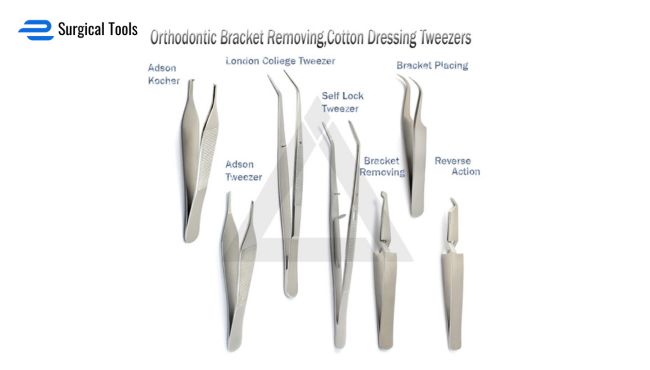
Uses in General Surgeries:
These tweezers are used primarily in general surgery for tasks such as handling tissues, suturing, or extracting small foreign bodies. They are versatile and serve as an essential tool for most surgeries, especially when working with soft tissues that require a delicate grip.
Popular Models and Features:
Some popular models of standard surgical tweezers include those with serrated tips for better grip, and others that are smooth to prevent tissue damage. The ergonomic handles of many models ensure that surgeons can use them comfortably for extended periods. The materials used, typically stainless steel, offer strength and resistance to corrosion while maintaining sharpness.
Tissue Forceps
What Makes Tissue Forceps Different from Regular Tweezers:
Tissue forceps are a specialized type of tweezer designed specifically for the safe handling of soft tissues. Unlike standard tweezers, tissue forceps have more precise and durable features, allowing them to grip delicate tissues without causing damage.
Applications in Delicate Tissue Handling:
These forceps are essential for procedures where delicate tissue handling is required, such as in soft tissue surgeries (e.g., plastic, reconstructive, or orthopedic surgeries). The fine tips help in securely grasping tissues without causing tears or other forms of trauma.
Design Features:
Tissue forceps come in two primary forms: fine-tipped and broad-tipped. Fine-tipped forceps are used for handling small, delicate tissues, while broad-tipped forceps provide a stronger grip for larger sections of tissue. Some tissue forceps are also equipped with locking mechanisms to keep tissues securely in place during a procedure.
Splinter Forceps
Specific Uses in Removing Splinters and Foreign Bodies:
Splinter forceps are specialized surgical tweezers designed for the removal of splinters, foreign bodies, or small objects embedded in the skin or soft tissues. These tweezers typically feature a fine, sharp tip that allows surgeons to delicately extract objects without causing damage to surrounding tissues.
Thin, Sharp Tips for Precise Removal:
The thin, sharp tips of splinter forceps enable precision in removing foreign bodies with minimal discomfort to the patient. They are often used in dermatological procedures, trauma cases, and emergency medicine.
Hemostatic Forceps (Clamp Tweezers)
Role in Controlling Bleeding:
Hemostatic forceps, also known as clamp tweezers, play a crucial role in controlling bleeding during surgery by clamping blood vessels or tissues. These forceps are designed to securely occlude vessels, preventing blood flow and making it easier to work in a blood-free field.
Design Differences:
Hemostatic forceps typically feature serrated jaws that create a tight, secure grip on blood vessels. They come in both straight and curved versions, allowing surgeons to access vessels from different angles. Many models are equipped with locking mechanisms to keep the forceps securely in place once clamped.
Micro Tweezers
Specialized Use in Microsurgery:
Micro tweezers are designed for use in microsurgery, where extreme precision is essential. These tweezers are typically used in delicate surgeries such as eye operations, neurosurgery, and other procedures that require working with tiny, fragile tissues.
Extremely Fine Tips for Delicate Structures:
Micro tweezers feature exceptionally fine tips, enabling surgeons to handle structures such as nerves, arteries, and small vessels with unparalleled precision. Their small size and precise tips allow for the manipulation of delicate tissues in microscopic surgical fields, such as retinal surgeries or spinal procedures.
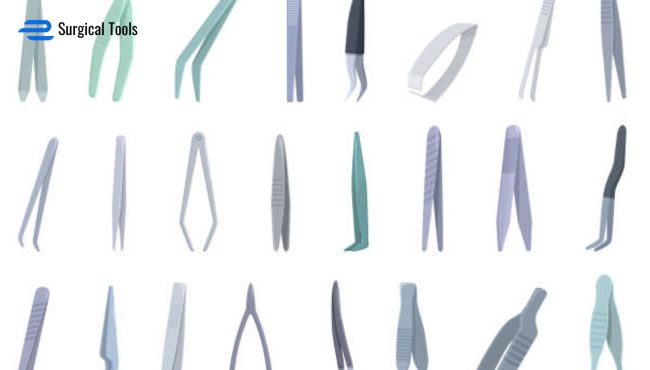
Dressing Forceps
Uses in Wound Care and Dressing Changes:
Dressing forceps are a non-surgical tool commonly used in wound care, dressing changes, and in non-invasive medical procedures. These tweezers are essential for handling sterile materials without contaminating the wound area.
Features for Secure Handling:
Dressing forceps typically feature non-slip tips that ensure a firm, secure grip on sterile dressings, cotton balls, gauze, or bandages. Their lightweight, ergonomic design ensures that healthcare professionals can use them with minimal effort and optimal precision.
Dissecting Tweezers
Commonly Used in Dissection and Separation of Tissues:
Dissecting tweezers are frequently employed in both surgical and educational settings, especially when performing dissections or during procedures that require separation of tissues. These tweezers are designed to help surgeons dissect, separate, and manipulate tissue layers with great accuracy.
Long, Thin Tips for Delicate Operations:
Dissecting tweezers are characterized by long, thin tips that provide a high level of control over delicate tissues. They are essential in surgeries where precision is needed to avoid unnecessary damage, such as in biopsies or delicate excisions.
Adson Forceps (Adson Tissue Tweezers)
A Detailed Look at This Classic Tool: Adson forceps, also known as Adson tissue tweezers, are among the most popular surgical tweezers used for manipulating tissues during surgery. They are particularly valued in cosmetic and reconstructive surgery for their precision.
Application in Fine Surgeries: Adson forceps are frequently used for delicate tasks such as suturing, handling small tissues, or securing grafts. Their fine tips and locking mechanism make them ideal for procedures requiring absolute precision and control. The textured tips help grip tissues securely without causing excessive pressure or damage.
Kelly Forceps
Picture an operating room buzzing with focus—every tool has a job, and surgical tweezers are the unsung heroes. They come in all shapes, sizes, and styles, each one crafted for a specific task. Knowing which pair to grab can make or break a surgery, ensuring precision and keeping patients safe from unnecessary trauma. Let’s walk through the most common types of surgical tweezers and see how they’re put to work.
Standard Surgical Tweezers
The Everyday MVPs
Standard surgical tweezers are the go-to tools you’ll spot in almost any procedure. Whether straight or curved, with fine, medium, or broad tips, they’re the versatile workhorses for holding tissues, positioning sutures, or fishing out small objects. Think of them as the Swiss Army knife of the OR—ready for anything.
Where They Shine
In general surgery, these tweezers handle everything from suturing wounds to gently gripping soft tissues. They’re perfect when you need a delicate touch without overcomplicating things—say, pulling out a tiny foreign body or aligning tissues just right.
What Makes Them Tick
You’ll find models with serrated tips for extra grip or smooth ones to keep tissues safe. Many come with ergonomic handles so surgeons can keep going for hours without a cramp. Made from stainless steel, they’re tough, corrosion-resistant, and sharp through countless uses. Check out Surgical tweezers for a closer look at some top-notch options.
Tissue Forceps
The Tissue Whisperers
Unlike regular tweezers, tissue forceps are built to cradle soft tissues with care. They’re sturdier and more precise, designed to grab without tearing—a must-have for delicate work.
Perfect For
Think plastic surgery, reconstructive procedures, or orthopedic fixes. Their fine tips securely hold small tissues, while broader ones tackle larger sections, all without causing a mess.
Standout Features
Fine-tipped or broad-tipped, they adapt to the task. Some even lock in place, keeping tissues steady during tricky moves. It’s all about control without compromise.
Splinter Forceps
The Precision Extractors
Got a splinter or foreign object stuck somewhere it shouldn’t be? Splinter forceps are your answer. With thin, sharp tips, these surgical tweezers pluck out troublemakers with minimal fuss.
Where They’re Handy
Dermatology, trauma cases, or ER visits—these are the go-to for quick, clean removals. Patients barely feel a thing, thanks to that pinpoint accuracy.
Hemostatic Forceps (Clamp Tweezers)
Bleeding’s Worst Enemy
Hemostatic forceps, or clamp tweezers, step in to stop bleeding fast. They clamp down on blood vessels or tissues, creating a clear, blood-free zone for surgeons to work in.
How They’re Built
Serrated jaws lock tight, coming in straight or curved styles to reach tricky spots. Many have a locking mechanism to stay put once clamped—super practical in messy situations. Curious about bleeding control in surgery? The Cleveland Clinic has a solid rundown.
Micro Tweezers
Masters of the Minuscule
Micro tweezers are the precision champs of microsurgery—think eye surgeries or neurosurgery. They’re made for the tiniest, most fragile tissues where every micron matters.
Why They’re Special
With ultra-fine tips, they handle nerves, arteries, or retinal tissues like a pro. They’re a game-changer in delicate fields, offering unmatched control. Peek at Surgical tweezers for some stellar examples.
Dressing Forceps
Wound Care Warriors
Not just for surgery, dressing forceps are all about wound care and dressing changes. They keep things sterile, handling gauze or cotton without contaminating anything.
Key Traits
Non-slip tips grab dressings securely, and their lightweight, ergonomic design makes them a breeze to use. It’s precision meets practicality.
Dissecting Tweezers
The Tissue Separators
Dissecting tweezers are a staple in both surgery and classrooms. They’re perfect for slicing through tissue layers or separating them with finesse.
What They Bring
Long, thin tips give surgeons total control, ideal for biopsies or delicate cuts where damage isn’t an option. They’re all about accuracy in tight spots.
Adson Forceps (Adson Tissue Tweezers)
The Classic Precision Pick
Adson forceps are a surgeon’s best friend in cosmetic or reconstructive work. They’re loved for their fine-tuned control and reliability.
Where They Excel
Suturing, grafting, or handling small tissues—their textured tips grip without overdoing it, and a locking option keeps everything steady. The National Institutes of Health dives deep into tools like these if you’re curious.
Kelly Forceps
The Heavy Lifters
Kelly forceps are the big guys—robust and ready to clamp larger tissues or vessels. They’re built for the tough stuff.
Best Used In
Abdominal surgeries, orthopedic procedures, or any general surgery needing a strong hold. Straight or curved, their serrated jaws mean business. For more on surgical tools in action, the World Health Organization offers some great insights.
Choosing the Right Surgical Tweezer for the Job
Picking the perfect surgical tweezers isn’t just a detail—it’s a game-changer for any procedure. With so many options out there, it’s all about matching the tool to the task. Let’s break down what to think about when choosing the right pair for the job, so you’re set up for success in the operating room.
Factors to Consider When Selecting Surgical Tweezers
What Kind of Surgery Are You Doing?
The type of surgery you’re tackling is the first big clue. A general procedure might call for a trusty pair of standard surgical tweezers, like the ones you’ll find at Surgical tweezers—versatile and ready for anything. But if you’re diving into microsurgery, you’ll need something ultra-specialized, like micro tweezers, built to handle tiny, delicate tissues with next-level precision. Every surgery’s got its own vibe, and the tweezer’s design needs to match that energy.
Size and Precision: How Fine Do You Need to Go?
Size matters here. For intricate work—like gripping fine tissues—fine-tipped or micro tweezers are your best bet. But if you’re dealing with bigger stuff, say in abdominal or orthopedic surgeries, larger forceps like Kelly tweezers step up. Delicate tips give you control for small, fiddly tasks, while broader ones lock down larger tissues with confidence. It’s all about what the job demands.
Handle Style: Get a Grip
Handles come in different flavors, and each has its moment:
- Curved Handles: Great for sneaking into tricky spots—think tight corners or awkward angles.
- Straight Handles: Your go-to for straightforward access, no fuss needed.
- Hinged Tweezers: These lock in place, holding tissues steady for as long as you need—perfect for precision over the long haul.
Picking the right handle keeps the surgeon comfy and the procedure on track.
Ergonomics and Comfort
Why Comfort Counts in Marathon Surgeries
Ever try holding something tiny for hours? It’s tough! Long surgeries can wear out even the steadiest hands, and that’s where comfort comes in. Surgical tweezers with ergonomic designs—ones that feel like they belong in your hand—keep fatigue at bay, letting surgeons stay sharp and precise from start to finish.

How Ergonomics Boost Control
Think contoured handles that hug your fingers or textured grips that won’t slip, even when things get intense. These tweaks cut down on hand strain and amp up control, especially for delicate moves. It’s like giving your hands a superpower—less tired, more steady. The Cleveland Clinic has some great insights on how tools like these make a difference.
Material and Durability
Why Stainless Steel Rules
Stainless steel is the MVP of surgical tweezers for a reason—it’s strong, rust-resistant, and tough enough to handle repeated sterilization without breaking a sweat. It’s the reliable choice that keeps on ticking, procedure after procedure.
Fancy Coatings for Extra Oomph
Some tweezers get a boost with nickel or titanium coatings. These add durability, fend off wear and corrosion, and make cleaning a breeze—key for keeping things sterile. A smoother surface also means less hassle and lower contamination risks.
Sterilization and Maintenance
Keeping Tweezers in Top Shape
Clean, well-maintained surgical tweezers are non-negotiable for safety and performance. After every use, they need a thorough scrub—think autoclaving with high heat and pressure to zap any germs. Regular care keeps them ready for action.
Cleaning Tips (and What to Skip)
Stick to gentle, non-corrosive cleaners—harsh chemicals or scrubby pads can nick the tips or ruin coatings. Give them a quick once-over for wear, and swap out any that look past their prime. The World Health Organization has solid tips on keeping surgical tools pristine.
The Role of Surgical Tweezers in Various Specialties
Surgical tweezers are MVPs across medical fields, from tiny tweaks in microsurgery to big moves in orthopedics. Here’s how they shine in different specialties.
Plastic and Reconstructive Surgery
Masters of Skin and Tissue
In plastic and reconstructive work, precision is everything. Adson forceps—check out some great options at Surgical tweezers—are a favorite, with fine tips that handle skin and soft tissues like a dream. Whether it’s a cosmetic tweak, a skin graft, or a full-on reconstruction, these tweezers nail suturing and repositioning with finesse.
Neurosurgery
Micro Tweezers to the Rescue
Neurosurgery is high-stakes—brain and nerves don’t mess around. Micro tweezers step up with ultra-fine tips, perfect for handling delicate brain tissues or tiny blood vessels without a hitch.
Precision Under Pressure
Separating brain tissues, tweaking nerves, or securing vessels—these tweezers deliver the accuracy neurosurgeons need to dodge complications and boost recovery odds.
Ophthalmic Surgery
Eye on the Prize
Eyes are delicate, and ophthalmic surgery demands tools to match. Specialized surgical tweezers, like ophthalmic forceps, bring fine tips to the table for cornea or retina work—think cataract removal or retinal fixes where every move counts.
Tailored for Eyes
From atraumatic tips that avoid damage to models built for grasping, these tweezers make eye surgeries safer and smoother. The American Academy of Ophthalmology dives into tools like these if you’re curious.
Orthopedic Surgery
Big Jobs, Big Tools
Orthopedics deals with bones and muscles, and that means bigger tissues. Kelly forceps—larger and tougher—clamp down on tissues or vessels during joint repairs or fracture fixes.
Steady Hands, Steady Healing
These robust tweezers keep everything in place, cutting down on damage and speeding up recovery. They’re a must for abdominal or trauma surgeries too.
Advancements in Surgical Tweezer Design and Technology
Surgical tweezers have come a long way, and the latest upgrades are making waves in the operating room. From tougher materials to high-tech features, these innovations are boosting performance, keeping patients safer, and helping surgeons nail every procedure. Let’s explore how modern tech is reshaping these essential tools.
Innovations in Surgical Tweezer Materials
Tougher Stuff for Tougher Jobs
The operating room is no place for flimsy tools, and surgical tweezers are stepping up with cutting-edge materials. Titanium’s a standout—light as a feather but strong as steel, it makes tweezers easy to handle without sacrificing durability. Then there’s coated alloys with anti-corrosive magic, shrugging off rust even after countless sterilization rounds. These upgrades mean tweezers last longer, stay sharp, and perform like champs, no matter what’s thrown at them. Whether you’re curious about top-tier options, check out Surgical tweezers for some impressive examples.
High-Tech Surgical Tweezers
Smart Tools for Smarter Surgeries
As surgeries get trickier, tech is lending a hand—literally. Imagine surgical tweezers with built-in sensors that feel tissue resistance or pressure, giving surgeons real-time feedback. Or ones with tiny LED lights to brighten up dark corners of the body, making every move crystal clear. And then there’s the robotic twist—tweezers paired with robotic systems for precision that’s almost superhuman. These high-tech tweaks cut down on errors and boost control, paving the way for better patient outcomes. The National Institutes of Health has some fascinating reads on how tech is transforming surgical tools.
The Importance of Surgical Tweezers in Patient Safety
When it comes to keeping patients safe, surgical tweezers are the unsung heroes. Their precision and reliability help dodge mistakes, minimize trauma, and speed up recovery. Here’s why they’re a big deal.
Precision and Safety
Fewer Slip-Ups, Better Results
A good pair of surgical tweezers can make all the difference in avoiding oops moments. Those fine tips and ergonomic designs let surgeons handle delicate tissues with kid gloves, cutting the risk of damage or slip-ups that could spiral into bigger issues. Whether it’s a brain surgery or a tiny stitch, the right tweezers—like those at Surgical tweezers—keep things steady and safe.
Protecting the Sensitive Stuff
In spots like the brain or eyes, precision isn’t just nice—it’s everything. The right surgical tweezers give surgeons the control to tweak tiny tissues without causing chaos, slashing risks like bleeding or infection. It’s all about keeping patients in the clear.
Reducing Trauma
Gentle Touch, Faster Healing
Fine-tipped tweezers are like tissue whisperers—they grab without crushing, perfect for fragile skin, vessels, or nerves. Less damage means quicker healing, fewer scars, and happier patients. It’s a small tool with a big impact.
Fewer Follow-Ups
When surgical tweezers do their job right, the surgical site heals up nicely—no need for extra trips to the OR. Less trauma upfront translates to smoother recoveries and fewer headaches later.
Maintenance and Sterilization of Surgical Tweezers
Taking care of surgical tweezers isn’t just about keeping them shiny—it’s about performance, longevity, and patient safety. Here’s how to keep them in top shape.
How to Properly Sterilize Surgical Tweezers
Autoclaving vs. Chemical Cleaners
Sterilization’s a must to zap germs and keep infections at bay. Autoclaving—blasting tweezers with high-pressure steam—is the gold standard, perfect for stainless steel or titanium models. For delicate ones or those with special coatings, chemical sterilization steps in, using solutions to disinfect without heat damage. Just watch out for residue—cleanliness is king. The World Health Organization has great guidelines on sterilizing tools like these.
Spotting Trouble
Bent tips or cracked handles? That’s a red flag. Damaged tweezers can flop on the job or spread germs, so inspect them regularly and swap out anything sketchy to keep things safe.
Longevity and Care Tips
Storing Them Right
Keep surgical tweezers in a clean, dry spot—think trays or pouches that shield those precious tips from dings. Tossing them loose with other tools is a recipe for scratches or dull edges.
Keeping Tips Sharp
Sharp tips are the heart of precision. Check them often, and if they’re dulling, get them professionally sharpened or replace them. Gentle handling and smart care keep them ready for years of action.
Conclusion
Surgical tweezers are the backbone of precision in medicine, delivering the reliability surgeons need for top-notch results. By getting to know the types, their uses, and how to care for them, medical pros can pick the perfect pair for every job—boosting patient safety and surgical success. With tech pushing the boundaries of design, from titanium builds to robotic assists, these tools are only getting better, giving surgeons sharper control and patients better care. Pair that with smart maintenance and sterilization, and you’ve got surgical tweezers that last, perform, and protect. For a peek at some standout options, explore Surgical tweezers and see the difference for yourself!
Frequently Asked Questions
How Do I Pick the Right Surgical Tweezers for a Job?
Bro, it’s all about what you’re cutting into. Regular surgery? Grab some basic ones. Tiny, fiddly stuff like microsurgery? You need those micro-ones with needle tips. Think—what’s the gig, how steady do I need it, curved or locking handle? Pick what fits, like choosing a bat for the pitch.
Why Are Surgical Tweezers Always Stainless Steel?
Because stainless steels a bloody tank, man! Doesn’t rust, takes a beating, and stays sharp even after a million cleans. That’s why stuff like surgical tweezers lasts forever—tough as nails, no whining.
What’s the Deal with Tissue Forceps vs Normal Tweezers?
Tissue forceps are the softies—they hold tissues like a baby, no tearing, no mess. Regular tweezers? They’ll grab anything, no manners. These ones are for delicate shit like fixing faces, where you can’t screw up.
How Do Ergonomic Surgical Tweezers Help Out?
Mate, imagine pinching something small for hours—your hand’s dead, right? Ergonomic surgical tweezers feel like they’re made for you, no cramps, no slipping. Docs can go long without losing it—keeps them sharp when it’s crunch time.
Do Surgical Tweezers Work for Eye Surgery?
Hell yeah! They’ve got special ones—ophthalmic forceps—for eyes. Shit like surgical tweezers has tips so fine they can mess with cornea or retina without fucking it up. Perfect for cataracts and all that.
What’s This Smart Surgical Tweezers Nonsense?
It’s not nonsense, it’s badass! Some got sensors to check pressure, some light up like a torch, others roll with robots for crazy accuracy. They’re like a cheat code for docs doing tough cuts—makes life easier.
How Do I Clean Surgical Tweezers Proper?
Two ways, man—blast ‘em with autoclave steam, kills everything dead, works ace on steel ones. Or if they’re fancy, dip ‘em in chemical stuff, but wash it off good so no junk’s left. Keeps ‘em clean, no drama.
Why Do Fine-Tipped Tweezers Matter for Patients?
Cos they’re gentle as hell—grab stuff without smashing it. Less mess means people heal fast, no ugly scars, no bullshit. It’s a small thing that saves big headaches for the patient.
How Do I Keep Surgical Tweezers Alive Forever?
Love ‘em, bro! Stick ‘em in a clean box so the tips don’t get banged, scrub ‘em after every go, and peek at ‘em sometimes to see if they’re still good. Little care, and they’ll stick with you like an old mate.

